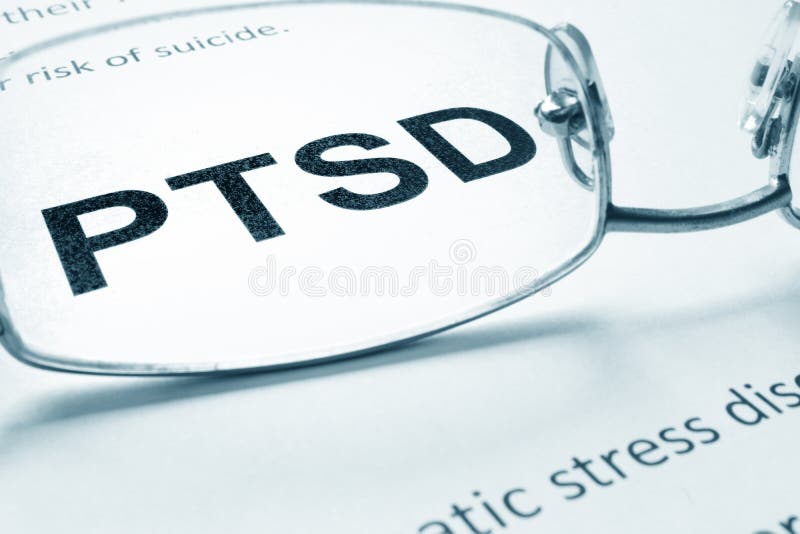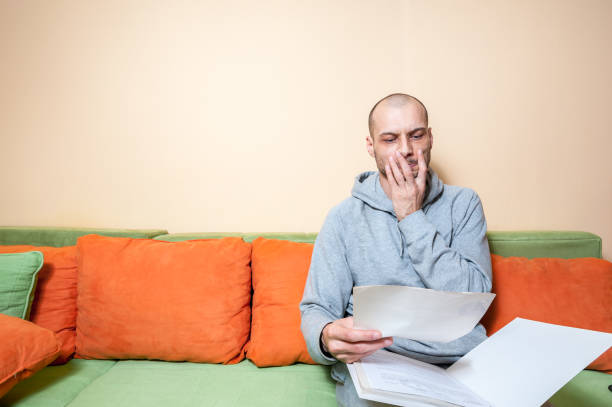Table of Contents
- Introduction
- Post-Traumatic Stress Disorder (PTSD)
- Acute Stress Disorder (ASD)
- References
- Further Reading
I. Introduction
Exposure to a traumatic event is normally accompanied by distress.
For most individuals, such distress resolves spontaneously without the onset of any psychiatric illness. Among a subset of people, the type, severity, and duration of symptoms following trauma will meet the criteria for either acute stress disorder (ASD) or post-traumatic stress disorder (PTSD).
ASD is not as well studied as PTSD.
Some trauma researchers feel ASD is on a continuum with PTSD and that the cut-off times for the two disorders are arbitrary.
Therefore, a more detailed description of trauma and its treatment is provided in Section II: Post-Traumatic Stress Disorder.
Trauma can affect both psychological and physical functioning.
Some research has suggested that the physical effects of trauma have been related to significant health problems, such as diminished functioning of the immune system and increased susceptibility to infections.
The psychological effects of PTSD may manifest in increased risk-taking behavior, such as substance use, poor eating habits, or unsafe sexual activity.
In addition, patients with PTSD may suffer from depression, social isolation, impairments in trust and attachments, and feelings of anger.
Patients with HIV/AIDS may be affected by past trauma to the point that it manifests in problems with disease management, such as disrupted or negative interactions with medical personnel and/or medication non-adherence.
| Key Point |
|
Exposure to traumatic events can lead to increased risk-taking behavior, including substance use, unsafe sexual practices, and difficulty forming therapeutic relationships with medical personnel. |
II. Post-Traumatic Stress Disorder (PTSD)
PTSD can result from a single traumatic event, such as a car accident, rape, or experience of a natural disaster, or an ongoing pattern of traumatic experiences, such as childhood abuse (physical and/or sexual), domestic violence, homelessness, military duty or combat, or severe chronic illness. Because the psychological symptoms that commonly occur following a traumatic event may remit spontaneously over time for most people, some researchers conceptualize PTSD as a disorder of recovery.
| Key Point |
|
The likelihood of a patient developing PTSD varies according to the affected person's vulnerability and the stressor's severity. |
A history of previous traumatic experiences increases a person's vulnerability to developing PTSD upon exposure to subsequent trauma. Previous traumatic experiences may impair his/her ability to handle future stressors. The more severe the trauma, the greater the likelihood that the patient will develop PTSD.
The rate of PTSD following exposure to a particular trauma ranges from 12% to 70%, with the higher rates occurring in populations exposed to interpersonal violence (e.g., rape, sexual abuse, torture). Women have higher rates of PTSD than men. Among women, sexual assault is the most common precipitating trauma, whereas, among men, the most common trauma is combat exposure.
Although PTSD has a lifetime prevalence rate of approximately 1.3% to 7.8% in the general population, the rates of PTSD in the HIV-infected population are higher.
The prevalence of PTSD in HIV-infected individuals may be as high as 42%.1 Although the onset of a severe, life-threatening illness (such as HIV/AIDS) can sometimes be a traumatic experience leading to PTSD, more often, a history of physical or psychological trauma (and diagnosis of PTSD) co-occurs with an individual's HIV status.
Among people with the most severe mental illnesses, specifically schizophrenia, schizoaffective disorder, and bipolar disorder, comorbid PTSD is a significant predictor of HIV infection.2
A. Presentation
Patients with PTSD may show a variety of symptoms, which must persist for more than 1 month to meet the criteria for PTSD. The symptoms may be straightforward or may vacillate between overwhelming emotions caused by memories of the event and emotional numbness and dissociation. Dissociation is a disruption in the ordinary integration of consciousness, memory, or identity. It can present as flashbacks, depersonalization, derealization, and/or episodes of lost time.
B. Diagnosis
Recommendations:
The primary care clinician should screen for PTSD annually or more often as clinically indicated.
Clinicians should use the criteria listed in the DSM-IV for a diagnosis of PTSD in patients with HIV/AIDS (see Table 1).
Clinicians should screen patients with PTSD or significant trauma histories for clinical depression, anxiety disorders, or alcohol or other substance use disorders.
| Key Point |
|
Patients with PTSD may have dissociative symptoms, mistaken for HIV-related dementia or other HIV-related neuropsychiatric disorders. |
In patients with a history of traumatic experience, it is important to assess for the presence of PTSD by asking about the experience of the trauma and reviewing the symptoms. PTSD is diagnosed when symptoms have been present for more than 1 month and an individual meets the other criteria listed in Table 1.
C. Management of Survivors of Trauma
Recommendations:
Clinicians should refer patients with symptoms of PTSD to a mental health professional as soon as possible for evaluation for psychotherapy or other forms of psychiatric treatment. The goal of treatment should be to reduce symptoms and fully reintegrate a safe sense of self.
If specialized services are unavailable, the primary care clinician should prescribe medications (see Appendix II) and monitor the improvement achieved with this strategy alone.
During the acute phase of treatment, clinicians should assess the patient's risk for harm to him/herself or others.
Some patients respond to medication and brief supportive interventions; most require psychotherapy and specialized mental health intervention.
However, if such services are unavailable, the primary care clinician should prescribe medication and monitor the improvement achieved with this strategy alone.
There is no single medication that treats all of the symptoms of PTSD.
Currently, sertraline and paroxetine are the only FDA-approved medications for PTSD.
Paroxetine should be avoided in patients less than 18 years old because of its possible association with increased suicide risk.
All SSRIs (in the same doses used for depression) help treat symptoms of depression and anxiety. Moreover, controlled and open studies of various SSRIs and other antidepressants have shown benefits in treating PTSD symptoms.3
Open trial studies of mood stabilizers have also shown some benefits. Long-term benzodiazepine use is not a preferred treatment.
If benzodiazepines are prescribed, careful monitoring is required due to the potential for abuse and concerns about disinhibition in those with significant dissociative symptoms.
| Key Point |
|
Although patients with PTSD may seek help for associated somatic symptoms, they may perceive medical intervention as intrusive and thus re-traumatizing. |
Empirically validated psychotherapy treatments include exposure therapy, anxiety management programs, and cognitive therapy.
These treatments modify fear and false cognitions created in response to single or multiple traumas and improve coping skills in the face of new stressors.
Treatment is offered through individual and group modalities.
Several studies show that psychodynamic treatments can also be helpful.
Early evidence supports the concurrent treatment of PTSD and addiction.
III. Acute Stress Disorder (ASD)
Recommendation:
For patients who meet the criteria for ASD, clinicians should follow the same guidelines as those recommended for managing PTSD (see Section II. C: Management of Survivors of Trauma).
Many of the symptoms of ASD (see Table 2) overlap with those of PTSD. ASD defines as a severe stress response that follows shortly after a traumatic event, whereas PTSD cannot be diagnosed until symptoms have persisted for 30 days or longer.
The presence of full or partial ASD is associated with an increased risk of developing PTSD.
In various studies, numbing, depersonalization, a sense of reliving the trauma, motor restlessness, and peri-traumatic dissociation was found to predict progression to PTSD.4
These associations raise the possibility that effective early treatment of trauma symptoms can be a useful strategy in preventing PTSD.
However, it should be noted that many trauma survivors who develop PTSD do not have initial ASD symptoms, and many individuals with ASD will not develop PTSD.
References
-
Cohen M, Hoffman RG, Cromwell C, et al. The prevalence os distress in persons with human immunodeficiency virus infection. Psychosomatics 2002;43:10-15.
-
Essock SM, Dowden S, Constatine NT, et al. Risk factors for HIV, hepatitis B, hepatitis C among persons with severe mental illness. Psychiatr Serv 2003;54:836-841.
-
Cooper J, Carty J, Creamer M. Pharmacotherapy for posttraumatic stress disorder: Empirical review and clinical recommendations. Aust N Z J Psychiatry 2005;39:674-682.
-
Harvey AG, Bryant RA. The relationship between acute stress disorder and post-traumatic stress disorder: A prospective evaluation of motor vehicle accident survivors. J Consult Clin Psychol 1998;66:507-512.
Further Reading
American Academy of Psychosomatic Medicine. Bethesda, MD. Available at: www.apm.org.
Bisson JI. Post Traumatic stress disorder. BMJ 2007;334:789-793.
Cohen MA, Gorman JM, eds. Comprehensive Textbook of AIDS Psychiatry. New York: Oxford University Press; 2008.
Fernandez F, Ruiz P, eds. Psychiatric Aspects of HIV/AIDS. 1st ed. Philadelphia, PA: Lippincott Williams & Wilkins; 2006.
Foa EB, Stein DJ, McFarlane AC. Symptomatology and psychopathology of mental health problems after disaster. J Clin Psychiatry 2006;67:15-25.
Organization of AIDS Psychiatry. Bethesda, MD: Academy of Psychosomatic Medicine. Available at: www.apm.org/sigs/oap.
Yehuda R. Biology of posttraumatic stress disorder. J Clin Psychiatry 2001;62:41-46.
Yehuda R. (ed.) Treating Trauma Survivors With PTSD. American Psychiatric Publishing Inc, Washington DC, 2002.


















